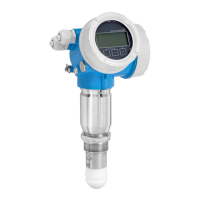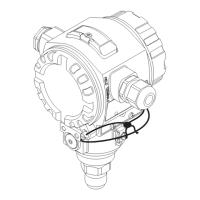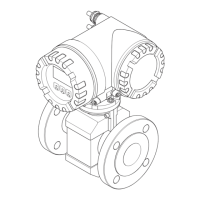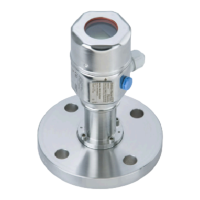Micropilot FMR62 Proof testing
Endress+Hauser 21
Heartbeat Verification enables the documentation of the current device diagnostic or
device status as proof of testing. This supports the documentation of proof tests according
to IEC 61511-1:2016 Section 16.3.3, "Documentation of proof tests and inspections".
Heartbeat Verification is not a substitute for a proof test. Test sequences with
Heartbeat Verification can contribute to the detection of systematic errors within the
context of proof testing. In this case, Heartbeat Verification is one step in the proof
test sequence.
Heartbeat Verification is based on device-specific test sequences that are performed
automatically. The verification also enables the detection of systematic errors in the
process, e.g.
Dirty antenna
Heartbeat Technology is a methodological design concept based on IEC 61508:2010
consisting of the Heartbeat Diagnostic, Verification and Monitoring modules. For more
information on Heartbeat Technology, see the associated documentation.
NOTICE
Before the test is started, the device is in a fault state, i.e. an alarm is output
‣
First rectify the cause of the fault before starting the proof test.
Overview of the proof tests:
• Test sequence A
Approach the level in the original vessel.
• Test sequence B
Remove the device and test using a test vessel. No change of level in the vessel is
necessary for this sequence.
• Test sequence C
Device self-test and level simulation.
• Test sequence D
Device self-test and level simulation. No change of level in the vessel is necessary for this
sequence. Additional checking of the measurement at an arbitrary level within the
measuring range. This achieves a higher diagnostic rate of coverage than with test
sequence C without changing the level.
Note the following for the test sequences:
• If an error is detected in one of the redundantly operated devices, the other devices must
be checked to see if there is the same error.
• You must also check that all cover seals and cable entries are sealing correctly.
6.1 Test sequence A
Preparatory steps
1. Connect a suitable measuring device (recommended accuracy better than ±0.1 mA)
to the current output.
2. Determine the safety setting (point level or range monitoring).
Procedure for point level monitoring
1. Approach at least one level directly above (MAX monitoring) or directly below (MIN
monitoring) the point level to be monitored. One method for checking with MAX
monitoring is the use of a mechanical rotary reflector. If a rotary reflector is used, the
device must be correctly configured in the operating menu during initial
commissioning. Navigate to: Setup → Advanced setup → Level. Set the following:
Max. filling speed liquid = Very fast > 2 m (80 in)/min
The safety function is checked.
2. Check safety function: Read the output current, record it and assess for accuracy.
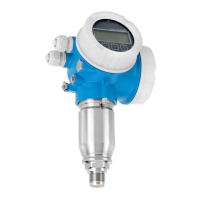
